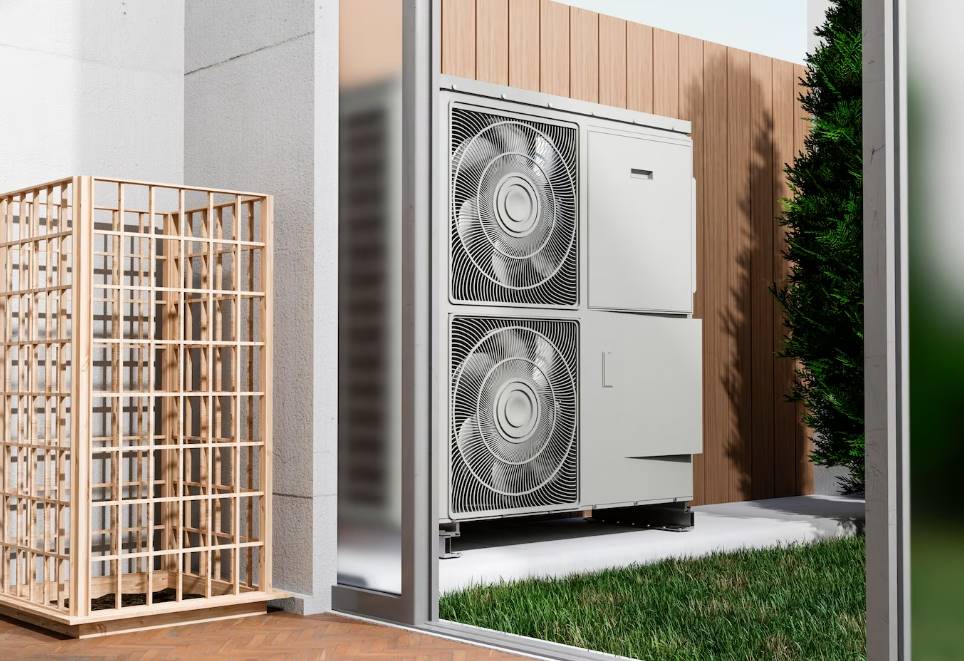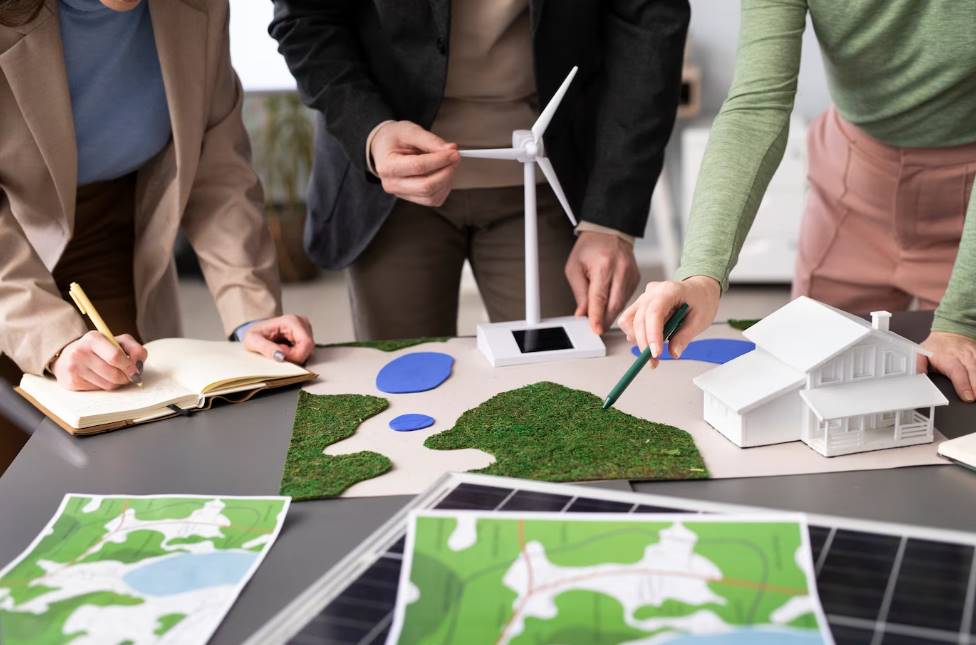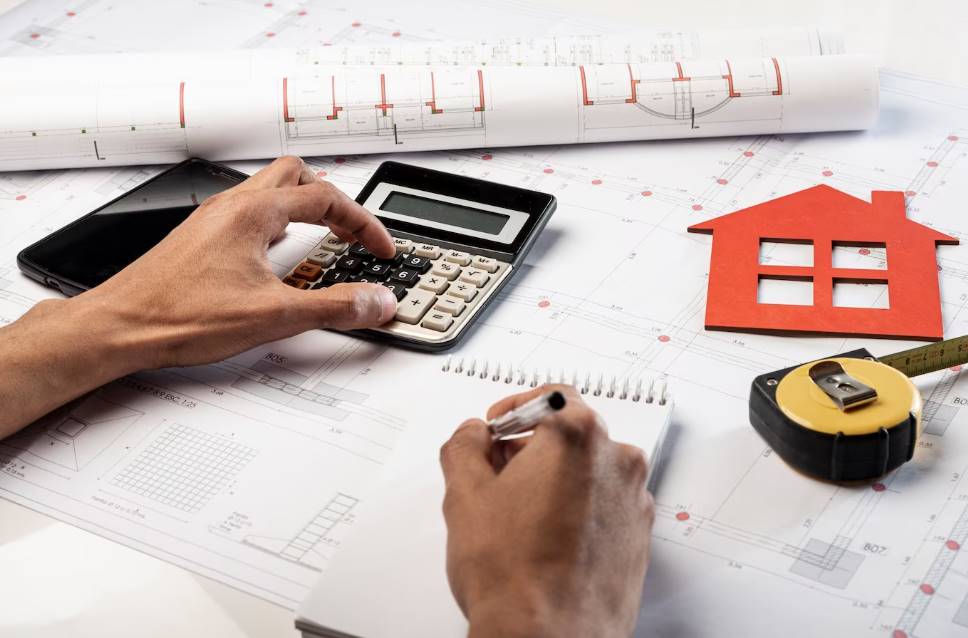It's time to recognise the frequently underappreciated unsung heroes of our homes and workplaces—the HVAC (Heating, Ventilation, and Air Conditioning) systems—in a world where sustainability and cost-effectiveness are becoming more and more crucial. Although many people are unaware of their amazing ability to produce significant energy savings, these unsung heroes serve a crucial part in producing a comfortable interior atmosphere.
Welcome to our blog, where we will begin an informative journey to reveal the complex relationship between "How HVAC Systems Help to Energy Efficiency." These systems have the ability to keep us cool in the summer and warm in the winter with astounding energy efficiency, or they can drain our resources like energy-hungry monsters.
As we go headfirst into the realm of HVAC systems, we'll uncover their enormous impact on our energy use and share the techniques and insider knowledge that can help us achieve savings that have never been possible before. Understanding the hidden potential of your HVAC system is the key to a greener, more cost-effective future, whether you're a homeowner looking to reduce your power bills or a company owner wanting to reduce overhead costs.
By the time you get to the conclusion, you'll have the information and resources necessary to turn your HVAC system into a savings powerhouse while still keeping a cosy indoor climate all year long. Let's start along this road to a greener, more enlightened future, one HVAC system at a time!
Understanding HVAC Systems
Although the term "air conditioning" is used frequently, you might not be familiar with the abbreviation HVAC. HVAC, or heating, ventilation, and air conditioning, is a general word. In the summer, air conditioning can keep you comfortable and cool, and in the winter, your heater or heat pump may keep you warm and toasty.
In order for an HVAC system to function, heat must be transferred from one area of the house to the outside air using refrigerant. Summertime is when this occurs. In order to offer heating during the winter, the process is reversed, and heat is taken from the outside and transferred inside.
At the outside unit's compressor part, the refrigerant is initially compressed. It is now liquid in nature. The refrigerant also warms up during this process and needs to be cooled. This is carried out in the HVAC system's condenser, or external, part. Condenser coils carrying the refrigerant are cooled by fans blowing across them. The liquid refrigerant is expanded quickly by an expansion valve, which is the next step in the process, turning it into a chilly gas. The gas is sent through the evaporator's coils, where it picks up heat from the interior air. These coils are cooled by the room air that is blown over them by a fan.
As a result of heat absorption, the refrigerant is now hot and is once more transported through the compressor, continuing the cycle.
Energy Efficiency in Heating
Most of the energy used by buildings is typically used by heating, ventilation, and air conditioning (HVAC). 70% of base building (i.e., landlord) consumption and 40% of total building consumption, respectively, are accounted for by a typical system. Figure 1's pie chart illustrates how an office building typically uses energy, with 39% going to HVAC, 25% to lighting, 22% to equipment, 4% to lifts, 1% to residential hot water, and 9% to other uses.
What Affects an Air Conditioning System's Energy Consumption?
Your air conditioner's energy consumption is heavily dependent on the following five elements.
Fan Settings
Manual and automatic settings are the two most common methods of fan control in HVAC systems. A manually controlled HVAC system will continue to blow air even if there is no need for it. If you forget to switch off the air conditioner when a guest checks out, for instance, it will continue to run and waste energy. Hence, you should get ready to expend more energy than usual. Filters get clogged up and need to be changed out as well.
If you're concerned about your carbon footprint, installing an HVAC system with automated fans is a good option to consider. This means the fan won't kick on unless the temperature in the room drops below a certain threshold. When integrated with a heating and cooling system, it can detect when a space is unoccupied and shut down accordingly. The efficiency and long-term viability of a heating, ventilation, and air conditioning (HVAC) system can be enhanced with the installation of automatic controls for the fans and filters.
Indoor Air Quality Requirements
As we discussed earlier when explaining how an air conditioner operates, hot air is sucked out of the guest rooms, cooled, and then pumped back into the rooms. If the quality of air in your rooms or area is poor, potentially because of the presence of dirt and dust, your HVAC system is more likely to become blocked. This will lead to decreased efficiency and higher electricity expenses.
It has been demonstrated that Continewm's technology improves air quality by filtering out pollutants and eliminating odours. The installation of this ceramic netting does not necessitate any adjustments to the existing air conditioning system. The more efficiently the air conditioner compressor operates, the less energy it consumes.
It is essential to assess the air quality in your building and make necessary changes. If you're in charge of a hospital, hotel, school, or business, providing clean air to your guests is essential to their comfort.
Temperature of the Outside Air
When the outdoor temperature is higher than the heat being released by the unit, the air conditioner has to work harder to maintain the desired indoor temperature.
The Age of Your HVAC System
When all of a system's components are fully operational, the resulting system performs at peak efficiency. However, this efficiency gradually drops over time, and the AC system likely contributes to the high energy bills. If your air conditioner is older than 10 years, it is likely inefficient and wastes a lot of energy and should be replaced. If this is the case, you are probably spending more money than required on heating and cooling your home or hotel.
Another reason why an older HVAC system is more likely to increase energy bills is that most manufacturers design their products to endure between 10 and 15 years. Once they reach an age beyond what is considered healthy, their productivity drops dramatically. You need to start planning for a replacement now.
System Size
While shopping for an air conditioner, it's important to consider the unit's capacity. If the unit is too small to adequately heat or cool the office, it will have to work harder to maintain the correct temperature. The increased workload means more power consumption and associated expenditures. An overworked HVAC system not only leads to higher energy bills, but also accelerates the wear and tear on its components, necessitating more frequent replacement.
We must point out that an overly large HVAC system is likely to be inefficient. This indicates that it will be wasting too much energy. Consequently, it's crucial to consult an HVAC expert to choose the ideal model for your house or size. Make sure to install an HVAC model that is large enough to prevent overworking if you intend to scale your hotel, possibly by adding more rooms.
Maintenance Precautions
Your system puts in extra effort throughout the year to maintain the temperature requirements established for your building. As a result, you should anticipate that various pieces will eventually break or become damaged. The energy use is likely to increase if they are not fixed properly and on time. Hence, make sure the system is constantly kept in top shape without delay.
Two times a year, in the spring and fall, is when you should perform major upkeep on the building. This is not to say that regular maintenance on the HVAC system is not necessary. Thus, it is important to do routine checks of the facility's performance to catch any problems early. If you notice that the HVAC system is using a lot more energy than usual, there may be a problem.
The Role of Thermostats
The thermostat controls the temperature in a heating and cooling system by signalling the equipment to maintain the appropriate temperature in the space. Depending on the temperature setting you want, the thermostat works with other HVAC system parts to provide you cool or warm air.
The mercury in older thermostats came from the coil and mercury switch that controlled the temperature setting. Nowadays, thermostats use bimetallic strips to regulate the temperature of a room. The settings are transmitted to the rest of the gadget via these strips, which are linked to circuit boards.
The Different Types of an Aircon Thermostat
Thermostats for air conditioners can be mechanical or electrical, with each having their advantages and disadvantages. Another type is the programmable kind, which is common in modern houses and buildings. Here are the key distinctions between them:
- Mechanical Thermostat. Many homes, businesses, and hotels still use the more traditional mechanical thermostats. The temperature markings can be switched between Celsius and Fahrenheit to accommodate personal tastes. This type of thermostat does not activate at a predetermined temperature. It has been observed to vacillate between little temperature increases on both ends of the range you set. In addition, mechanical thermostats are more cost-effective than their electronic counterparts.
- Electronic/Digital Thermostat. When compared to electronic thermostats, mechanical ones are up to 0.5 degrees Celsius less precise in their temperature regulation. The NTC thermistor is the sensor of choice for electricians because it offers precise readings of the surrounding room temperature.
- LCD or LED digital displays are commonly used in electronic thermostats, and they indicate not only the current temperature but also the humidity level in the space. Users can detect an AC problem and take corrective action.
- Programmable Thermostats. The programmable thermostat is the most popular model in contemporary homes and businesses. Programmable thermostats provide extra functions that improve the cooling comfort of the room while still having the fundamental features of an electronic thermostat.
One of these characteristics is a unique capability that automatically adjusts the room's temperature throughout the day based on the outside temperature. These thermostats include accurate temperature sensor units that balance the air inside the room and reduce energy use. Also, they may connect to numerous thermostats in various zones.
Calculating Energy And Cost Savings
How then can you calculate the amount of energy you will save by switching to more energy-efficient equipment?
How To Calculate HVAC Energy Savings For New AC Systems?
For a new air conditioner, you'll need the following details to determine HVAC energy efficiency:
- Size of your current air conditioner. The amount of heat that the device can remove from the air in an hour is measured in BTUs (British Thermal Units). Professionals may also use the term "size" to describe a unit's capacity, although this has nothing to do with the size of the unit. On the manufacturer's label of the device, next to the model and serial number, you may locate it.
- Electricity price (KWH). Find out how much you are spending for electricity per kilowatt hour to get a precise estimate. This information can be found on your utility bill.
- SEER rating of the current unit you have. Your appliance's SEER rating is indicated by a yellow "Energy Guide" sticker that you can find on it.
- Evaluate scores of new systems you are thinking about. They can be seen on product tags, product website pages, and sales quotes.
Calculating HVAC energy savings is quick and simple using this information. Choose COOLING from the top menu of the calculator tool. Enter your state, your electricity cost, the SEER of your current unit and the SEER of a replacement unit you are considering, as well as your state. Next, select CALCULATE.
A new system with the stated SEER rating will save you money over the course of five, ten, and fifteen years, as shown in the chart on the right.
By choosing the HEATING option at the tool's top, you can quickly perform a computation comparable to this for a new heating system.
Conclusion
HVAC systems play a crucial role in maintaining a comfortable interior atmosphere and are often overlooked in favor of energy efficiency. These systems transfer heat from one area of the house to the outside air using refrigerant, which is then compressed and cooled in the condenser. The process involves fans blowing across the coils, expansion valves, and fans, which then cool the gas through the evaporator's coils.
The energy consumption of an HVAC system is heavily dependent on five elements: fan settings, indoor air quality requirements, outdoor air temperature, and the age of the system. Manual and automatic settings can lead to increased energy consumption, while automated controls can enhance efficiency and long-term viability. Indoor air quality requires better air quality, as poor air quality can lead to decreased efficiency and higher electricity expenses.
Continewm's technology improves air quality by filtering out pollutants and eliminating odours, making it essential to assess air quality in buildings. The installation of ceramic netting can also help improve air quality, as it does not require adjustments to the existing air conditioning system.
As the age of the HVAC system increases, it is likely to contribute to high energy bills. If your air conditioner is older than 10 years, it is likely inefficient and wastes a lot of energy and should be replaced. Manufacturers design their products to endure between 10 and 15 years, so planning for a replacement is crucial. By understanding the hidden potential of your HVAC system, homeowners and business owners can achieve significant savings and a greener, more cost-effective future.
When purchasing an air conditioner, consider the unit's capacity to prevent overworking and ensure efficient use of energy. Overworking systems can lead to higher energy bills and increased wear and tear on components. Consult an HVAC expert to choose the ideal model for your home or size. Regular maintenance is crucial to prevent system issues and ensure optimal performance.
Thermostats control temperature in a heating and cooling system by signaling equipment to maintain the appropriate temperature in the space. Mechanical thermostats are more cost-effective and can be switched between Celsius and Fahrenheit. Electronic/Digital thermostats are less precise and use LCD or LED displays to display current temperature and humidity levels. Programmable thermostats offer additional features that improve cooling comfort and can connect to multiple thermostats in different zones.
To calculate energy savings for new AC systems, consider the size of your current air conditioner, electricity price (KWH), SEER rating of your current unit, and scores of new systems. Calculate HVAC energy savings by choosing "COOLING" from the top menu of the calculator tool, entering your state, electricity cost, SEER of your current unit and a replacement unit, and selecting "Calculate." A new system with the stated SEER rating will save you money over five, ten, and fifteen years.
In summary, choosing the right HVAC system is essential for maintaining efficiency and reducing energy consumption. Regular maintenance and regular checks can help identify potential problems early on.
Content Summary:
- It's time to recognise the frequently underappreciated unsung heroes of our homes and workplaces—the HVAC (Heating, Ventilation, and Air Conditioning) systems—in a world where sustainability and cost-effectiveness are becoming more and more crucial.
- Although many people are unaware of their amazing ability to produce significant energy savings, these unsung heroes serve a crucial part in producing a comfortable interior atmosphere.
- Welcome to our blog, where we will begin an informative journey to reveal the complex relationship between "How HVAC Systems Help to Energy Efficiency."
- These systems have the ability to keep us cool in the summer and warm in the winter with astounding energy efficiency, or they can drain our resources like energy-hungry monsters.
- As we go headfirst into the realm of HVAC systems, we'll uncover their enormous impact on our energy use and share the techniques and insider knowledge that can help us achieve savings that have never been possible before.
- Understanding the hidden potential of your HVAC system is the key to a greener, more cost-effective future, whether you're a homeowner looking to reduce your power bills or a company owner wanting to reduce overhead costs.
- In the summer, air conditioning can keep you comfortable and cool, and in the winter, your heater or heat pump may keep you warm and toasty.
- This is carried out in the HVAC system's condenser, or external, part.
- Most of the energy used by buildings is typically used by heating, ventilation, and air conditioning (HVAC).
- Your air conditioner's energy consumption is heavily dependent on the following five elements.
- Manual and automatic settings are the two most common methods of fan control in HVAC systems.
- A manually controlled HVAC system will continue to blow air even if there is no need for it.
- If you forget to switch off the air conditioner when a guest checks out, for instance, it will continue to run and waste energy.
- If you're concerned about your carbon footprint, installing an HVAC system with automated fans is a good option to consider.
- The efficiency and long-term viability of a heating, ventilation, and air conditioning (HVAC) system can be enhanced with the installation of automatic controls for the fans and filters.
- If the quality of air in your rooms or area is poor, potentially because of the presence of dirt and dust, your HVAC system is more likely to become blocked.
- It is essential to assess the air quality in your building and make necessary changes.
- You need to start planning for a replacement now.
- While shopping for an air conditioner, it's important to consider the unit's capacity.
- We must point out that an overly large HVAC system is likely to be inefficient.
- Consequently, it's crucial to consult an HVAC expert to choose the ideal model for your house or size.
- Hence, make sure the system is constantly kept in top shape without delay.
- Two times a year, in the spring and fall, is when you should perform major upkeep on the building.
- This is not to say that regular maintenance on the HVAC system is not necessary.
- Thus, it is important to do routine checks of the facility's performance to catch any problems early.
- The thermostat controls the temperature in a heating and cooling system by signalling the equipment to maintain the appropriate temperature in the space.
- Depending on the temperature setting you want, the thermostat works with other HVAC system parts to provide you cool or warm air.
- Thermostats for air conditioners can be mechanical or electrical, with each having their advantages and disadvantages.
- This type of thermostat does not activate at a predetermined temperature.
- LCD or LED digital displays are commonly used in electronic thermostats, and they indicate not only the current temperature but also the humidity level in the space.
- The programmable thermostat is the most popular model in contemporary homes and businesses.
- Programmable thermostats provide extra functions that improve the cooling comfort of the room while still having the fundamental features of an electronic thermostat.
- How then can you calculate the amount of energy you will save by switching to more energy-efficient equipment?
- For a new air conditioner, you'll need the following details to determine HVAC energy efficiency: Size of your current air conditioner.
- SEER rating of the current unit you have.
- Evaluate scores of new systems you are thinking about.
- Calculating HVAC energy savings is quick and simple using this information.
- Enter your state, your electricity cost, the SEER of your current unit and the SEER of a replacement unit you are considering, as well as your state.
- A new system with the stated SEER rating will save you money over the course of five, ten, and fifteen years, as shown in the chart on the right.
- By choosing the HEATING option at the tool's top, you can quickly perform a computation comparable to this for a new heating system.
Frequently Asked Questions About HVAC Systems
HVAC systems contribute to energy efficiency by regulating temperature, humidity, and ventilation, ensuring that heating and cooling are delivered as efficiently as possible, thus reducing energy consumption and associated costs.
SEER (Seasonal Energy Efficiency Ratio) and EER (Energy Efficiency Ratio) ratings measure the energy efficiency of HVAC systems. Higher ratings indicate greater efficiency, meaning the system consumes less energy to provide the same level of comfort, leading to cost savings and reduced environmental impact.
Common strategies include regular maintenance, upgrading to a more energy-efficient system, using programmable thermostats, sealing and insulating ductwork, and incorporating smart HVAC controls to optimize performance.
Yes, HVAC systems with eco-friendly features such as using environmentally friendly refrigerants, high-efficiency components, and energy-efficient design can significantly contribute to both energy efficiency and sustainability by reducing energy consumption and minimizing their carbon footprint.
You can measure energy efficiency by monitoring utility bills, comparing them to previous months or years, and using data from your HVAC system's energy consumption. Additionally, professional energy audits can provide detailed insights into your system's efficiency and suggest improvements.



